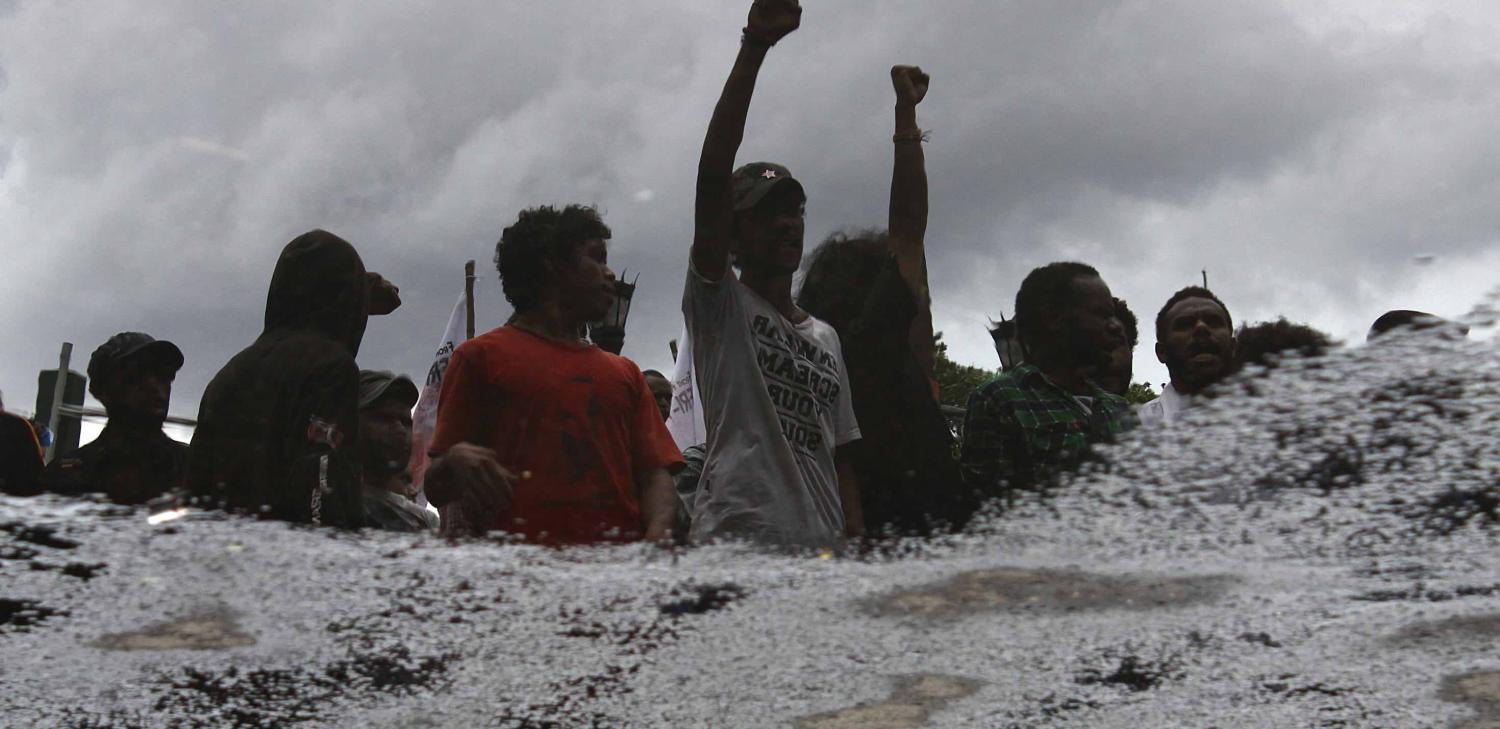Last year’s “hostage stand-off” in Indonesian Papua had hardly ended before more armed clashes began. Most violence in Papua is assumed to be an issue of indigenous people threatened by the state. But this assumption is anecdotal.
Despite the wealth Indonesia earns through Papua’s abundant natural resources, a dearth of government services results in ordinary Papuans having the lowest incomes, the lowest educational levels, and the highest mortality rates in the country.
Support for independence is certainly widespread. But in an effort to quantitatively analyse violence in Papua and Papua Barat, we examined the 2008–15 National Violence Monitoring System (NVMS), a database of Indonesian district- and provincial-level newspapers.
NVMS was essentially an exercise in collective newspaper reading, where dozens of analysts captured and coded every violent incident reported across Indonesia, digging through provincial archives dating back to 1998.
Most violence and not all killings make the news, especially in Indonesia where large parts of the country lack journalists and police. But NVMS remains the most comprehensive and methodologically sound dataset available. (NVMS regrettably ended in 2015 when the funding expired.)
We studied 2014 data – the final year of NVMS, when it captured 200,000 violent incidents nationwide – and earlier. We honed in on homicide, assuming that this measure would be illustrative of the frequency of other types of violence (assaults, riots, arson) as well.
While our analysis is not yet complete, what we have discovered thus far is revealing: crime kills more Papuans than the state; both crime and insurgency are extremely localised; and security actors tend to ignore violence unless they are targeted. A threadbare state is more apparent than a police state in 2018, as well as in 2014. (A draft version of the longer analysis is available for download here.)
Geographic parameters of homicide
Papua province contains 1.2% of Indonesia’s population, and in 2014 was home to 5% of its homicides. Killings were highly localised, with 54% occurring in Mimika Regency and Jayapura city.
Mimika’s homicide rate was 29.2 per 100,000 people – 30 times the national average – matching homicide rates in the Democratic Republic of the Congo and Colombia. Jayapura city came in a distant second, with 10 homicides per 100,000, equivalent to Haiti and Liberia, and matching the “violence epidemic” standard set by the World Health Organisation.
Crime, separatism, and homicide
In Papua province the leading cause of homicide was crime, which constituted 43.5% of murders. Deaths related to separatism came second, constituting 18% of all homicides from 2010–14. Police and military casualties were counted in this category.
All but one 2014 separatist-related death occurred in Papua province. Papua Barat was, and is, nearly free of such killings.
71% of separatist-related killings in Papua province occurred in four districts, mostly in Puncak Jaya. That district’s 48 deaths also occurred in discrete areas, namely Tingginambut and Mulia. Puncak Jaya was followed by Jayapura city (22), Lanny Jaya (17), Paniai (17), and Puncak (14).
The vast majority of Papua hosted no separatist-linked homicides.
Separatists kill more and better than security actors
Separatist violence killed more than security actor violence. Between 2010 and 2014, separatist attacks led to 122 deaths; security actor attacks, 43.
Security actor attacks were more frequent and more injurious, wounding 368, in comparison to 194 injured in separatist actions.
Separatist violence was also more targeted. 75% of deaths were security actors, followed by government staff. Civilians constituted only 20% of deaths and 16% of injuries. This compared starkly with security actor violence, where 65% of killings and 72% of injuries were civilians.
If we merge killings by police and military into a sole “state killing” category, across all categories only 5% of 2014 homicides were perpetrated by state actors, which is a small amount given prevailing views of the situation.
Other causes of homicide
In Papua province, crime and separatism as causes of homicides were followed by resource disputes (14.5%, one out of every six resource-linked deaths in Indonesia); mob justice (8.5%); “identity-based” or clan/ethnic violence (8%); domestic violence (5%); and election violence (2%).
The remarkably few election-linked homicides, in a significant reduction on previous years, still represent a quarter of Indonesia’s 2014 elections-related deaths.
2014 and contemporary Papua
Patterns of violence seen in 2014 form a prism through which to view 2018. Papua Barat hosts hardly any separatist activity; separatist violence in Papua remains contained primarily in Puncak Jaya and Mimika.
In the former, since 2015 at least nine civilians, three separatists, and 11 security actors have been murdered, including the TNI Kodim adjunct commander, with numerous people wounded. In the latter, intoxicated soldiers murdered two civilians in 2015 and were jailed.
A long arc of violence in Mimika began in August 2017 and continues. State and separatist violence was not totally confined, with other incidents in Yahukimo and Tolikara. While insurgent violence remains targeted, state violence seems to have become less indiscriminate, a likely legacy of President Joko Widodo’s 2014 election.
And violence outside the spectacle of insurgency continues, as mundane as it is pervasive. The real structural violence found within Papua, and other areas of Indonesia for that matter, is better discerned in a recent measles outbreak, compounded by malnutrition, that killed dozens in Asmat in February this year. This illustrates the absence of services in indigenous areas, and a corruption that kills.
A picture emerges from these figures: the Indonesian state in Papua is regarded as pervasive, but its absence is glaring. Symptoms of this are found not only in crime and vigilantism, but also in deaths from easily preventable diseases and in illiteracy, among other things.
Papua’s deaths, both spectacular and mundane, hint that, while Indonesia has coherent policies toward Papua’s natural resources, it has no coherent policy toward Papuans.

